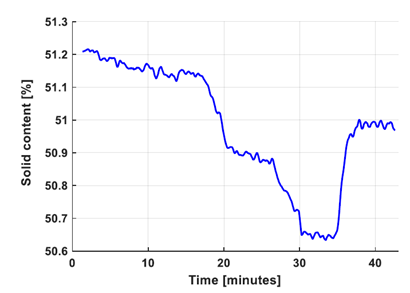Inline real-time measuring of particles in battery slurry.
With the electrification of the car park, the demand for high-performing batteries is skyrocketing. Many battery producers are significantly scaling up their production to meet these elevated needs. However, many of these production processes are still not optimized wasting a lot of time and resources. Current quality control consists of sampling and offline lab testing which is slow and labor-intensive. Inline sensors offer to monitor and control the production process in real time.

A critical parameter in the battery production is the solid content in the battery slurries. All the ingredients are added and mixed together to obtain a stable and homogeneous slurry. Small variations in the used components and production process can result in solid content and stability variations between different batches. Measuring inline has the benefit to immediately adjust the solid content in the slurry. This cuts time and costs related to intermediate quality control in the lab resulting in significant financial gains.

Aquantis inline sensors are used for inline measurements of the solid content in the battery slurry. Figure 2 shows the follow-up of the solid content of the battery slurry over time. In this particular test case, the solid content of the battery slurry was adjusted multiple times before reaching its target. The inline measurements show the changes in the slurry in real-time with a precision of 0.1%. This information can be used to provide continuous feedback to the production process, minimizing product waste and time losses.
Conclusion
The demand for high-performing batteries is rising fast. Monitoring and controlling the solid content in battery slurries is essential to reach the needed performance. By using inline sensors, the solid content can be monitored and controlled continuously with a precision of 0.1%. This allows to optimize the production process significantly saving time and resources.